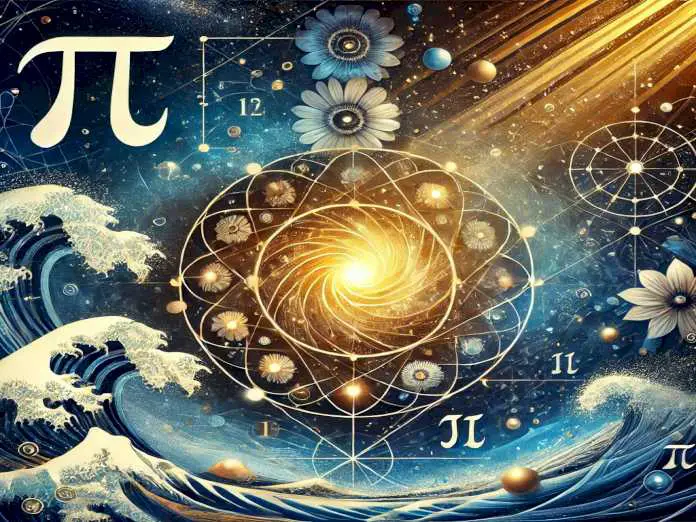The Great Math Mystery: Unraveling the Connection Between Mathematics and the Universe
The Great Math Mystery
Mathematics is often referred to as the language of the universe, a powerful tool that helps us understand the world around us. In this exploration, we delve into the origins of mathematics, its effectiveness in explaining the physical world, and whether it is a human invention or a hidden language of the cosmos. This journey navigates the intricate relationship between mathematics and nature, revealing how deeply intertwined they are.

The Origins of Mathematics | The Great Math Mystery
Throughout history, humans have looked at nature and sought to identify patterns. From the early observations of stars and their constellations to the understanding of time through the cycles of day and night, our quest for knowledge has always been driven by a desire to make sense of the world. Mathematics provides a framework for quantifying these observations, allowing scientists to analyze and understand the underlying causes of natural phenomena.
Patterns in Nature | The Great Math Mystery
Patterns are everywhere, from the symmetrical shapes of flowers to the spirals of galaxies. The Fibonacci sequence is one such pattern that appears frequently in nature, where numbers are derived from the sum of the two preceding numbers. This sequence is not just a mathematical curiosity; it can be observed in the petal counts of flowers and the arrangement of seeds in sunflowers. Such connections raise intriguing questions about whether nature has an inherent mathematical structure.
Why Mathematics Works
The effectiveness of mathematics in explaining the universe is a profound mystery. Why does it work so well? This question has puzzled great minds like Albert Einstein and Eugene Wigner, who referred to the “unreasonable effectiveness of mathematics” in the physical sciences. The relationship between mathematical models and physical reality is so strong that it often feels as though the universe is built on mathematical principles.
The Universal Nature of Pi
Take the number Pi, for instance. It represents the ratio of a circle’s circumference to its diameter, yet it appears in various unexpected contexts, such as probability theory and the behavior of waves. Pi has been calculated to trillions of digits, and its presence in nature hints at a deeper mathematical order that underpins the physical world.
The Mathematical Nature of Reality
Max Tegmark, a physicist at MIT, proposes a radical view: that the universe is fundamentally mathematical. He suggests that just as a video game’s world is defined by mathematical rules set by a programmer, our reality may also be a construct of mathematical principles. This perspective challenges our understanding of existence and raises questions about the nature of reality itself.
Mathematics and Music
The connection between mathematics and music further illustrates this idea. The ancient Greek philosopher Pythagoras discovered that musical harmony is based on simple numerical ratios. These relationships reflect a hidden order in nature, suggesting that mathematics is not merely a human invention but rather a fundamental aspect of the universe.
Mathematics: Invention or Discovery?
The debate over whether mathematics is invented or discovered continues to spark discussions among mathematicians and philosophers. Many believe that while the concepts of numbers and mathematical operations are human inventions, the relationships and structures they reveal are discoveries waiting to be uncovered.
Exploring Primitive Number Sense
Studies involving lemurs and other animals show that even without language or formal education, many species have a primitive sense of quantity. This suggests that the foundations of mathematics may be hardwired into our brains, providing a basis for the development of more complex mathematical understanding.
The Practical Applications of Mathematics
Mathematics has proven indispensable in various fields, including engineering, physics, and technology. The principles established by Galileo and Newton laid the groundwork for our understanding of gravity and motion, allowing us to calculate trajectories and design systems that operate in the physical world.
Mathematics in Engineering
Engineers often rely on mathematical models to create effective and practical solutions. However, the nature of engineering often requires approximations and simplifications, as real-world applications can be messy and complex. This practical approach contrasts with the absolute nature of mathematics and highlights the different ways in which mathematics is applied in various disciplines.
The Future of Mathematical Exploration
As we continue to explore the universe and uncover its secrets, mathematics will remain a vital tool in our quest for knowledge. Whether we view it as a human invention or a discovery of underlying truths, the relationship between mathematics and the natural world is a profound mystery that invites further exploration.
Conclusion
The great math mystery challenges us to ponder the nature of reality and the role of mathematics in our understanding of the universe. As we seek to answer these questions, we gain insight into the beauty and complexity of the world around us, reminding us that mathematics is not just a tool but a lens through which we can perceive the cosmos.
